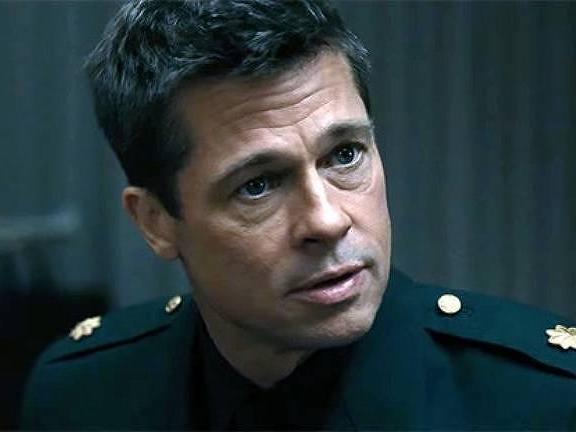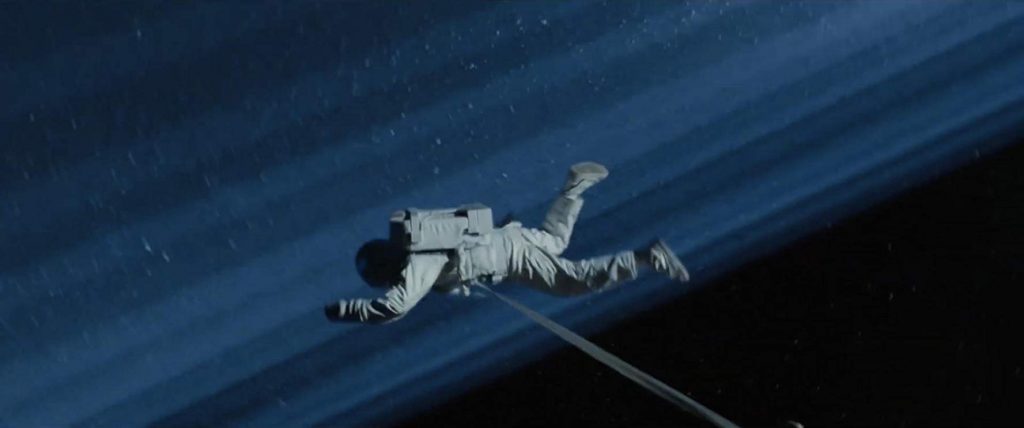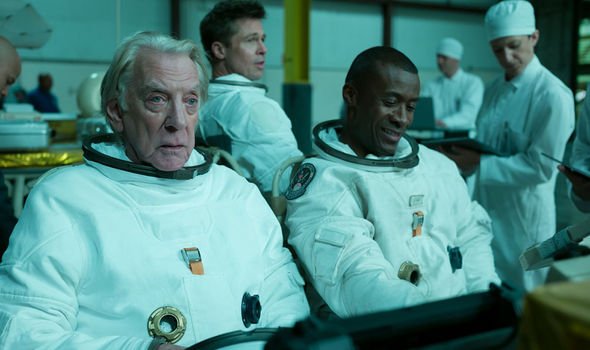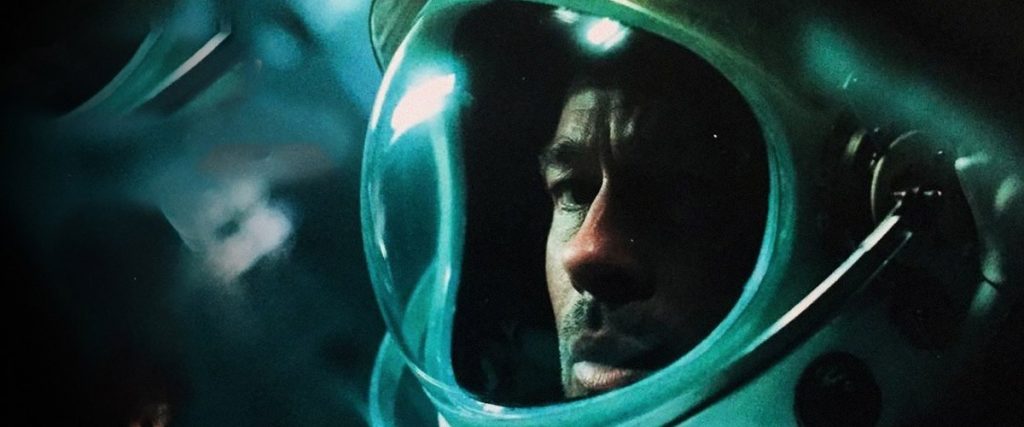RIO DE JANEIRO, BRAZIL – “Ad Astra” is an odd admixture of movie genres that plays out on a grand scale on the big screen as an action film with blockbuster aspirations, a high tech sci-fi odyssey, and a psychological drama all spun into one.
Directed and co-written by James Gray, it is a big ambitious film with a lot of story that doesn’t always make sense. But if you don’t look too deeply for logic or for any meaningful theme or commentary about where humankind stands in the vast universe that “Ad Astra” traverses, you can sit back, suspend your critical thinking and just go along for the ride.
Like many action films (genre one), “Ad Astra” begins with an explosion. In this scenario, the explosion catapults steely-nerved astronaut Major Roy McBride (Brad Pitt) from his work perch on a stratospheric antenna into a terrifying long haul tumble towards Earth, so far below.

Saved from free fall death by his tattered parachute, Roy dusts himself off and reports to headquarters where his commander assigns him to the heroic mission (genre two) to track and terminate the source of the super high energy electrical surges that are causing extreme explosions that are threatening human existence on Earth and at our species’ off-planet colonies scattered throughout our solar system.
This long-term mission has Roy heading for Mars and Neptune and beyond on a space odyssey that’s sure to be the stuff of high sci-fi spectacle.
And, in the realm of spectacular, “Ad Astra” delivers magnificently. Hoyte van Hoytema’s awesome cinematography, a full spectrum of stunning special effects and Hans Richter’s resonant score make you feel you’re in the middle of the movie.

But, Gray’s script, a sprawling genre-juggling example of flawed storytelling, driven by some awkwardly convenient improbabilities, straddles sci-fi space adventure tropes and dysfunctional family psychodrama in a most unconvincing way.
You see, while being briefed for his mission, unflappable Roy, the man whose heart rate remained less than 80 even as he plummeted to Earth in that opening scene, is given mind-boggling, emotion-shattering news.
Roy learns (genre three) that the source of the electrical surges triggering the explosions is his father, Dr. Clifford McBride (Tommy Lee Jones), the legendary space pioneer who’d left his wife and their young son – Roy — to embark on the Lima Project, a one way exploratory mission to find extraterrestrial intelligent life and, after decades of no contact, was presumed dead. Got that?
But, authorities now know that McBride senior, crazed by his long space stint, went rogue, killed his crew and is flying solo, so to speak, somewhere out there – and causing extreme power surges that are blowing things up. Only Roy can find and stop Dr. McBride because … dad might respond to his son’s voice beamed from Neptune into outer space….

Although the news about his heroic dead dad’s rogue resurrection puts Roy’s psyche into free fall, constant psychological testing shows he’s keeping his cool.
That he is in inner turmoil is revealed, however, in his voice-over narration that delves deep into the complexities of his relationship with his father and how it has impacted his emotional life, including the impending breakup of his marriage. And, then, there’s the inner dialog about what he will do when he finds his father and confronts him.
Roy has time to figure that out on the long haul to that broadcast station on Neptune, a trip that takes place in several stages. Because his mission is top secret and he’s traveling undercover, on the Earth to the moon leg of his journey Roy is booked on a regular commercial flight. He strides through a boarding area somewhat reminiscent of the entrance to Disneyland’s Space Mountain attraction.
Once he’s buckled into his seat, Roy asks the flight attendant for a pillow and blanket pack. She brings it to him, says “that will be US$125,” and swipes his wrist to charge his implanted chip. That memorable moment, which seems like a wink at the audience, sets expectations of some levity ahead, but it’s the high point of humor in the two-hour-long movie.

Later, on leg two, Roy’s journey is temporarily interrupted when his military shuttle diverts to respond to an SOS signal from a satellite research station that has, it turns out, been taken over by vicious flesh-eating apes (or are they aliens?).
The emergency stop actually stalls the plot. And another story stall occurs after he’s landed on Neptune, when Roy and his military escort are ambushed by planetary pirates in revved-up dune buggies and are pursued in a fast and furious high-speed chase scene across the barren surface of the planet. Great space adventure tropes, but these episodes are extraneous to the story – they actually seem like expensive shoots for a few cheap thrills.
Even with “Ad Astra”’s abundance of spectacle, Brad Pitt’s performance carries this extravagant film. Pitt confidently strides through the wide-angle shots of space station interiors and coolly maneuvers his way around the exteriors of space vehicles that are soaring against the stellar background, and he is equally comfortable in close up shots that reveal his inner stress.

Pitt fully and effectively embraces both sides of Roy’s character, but even so, “Ad Astra”, as his vehicle, never quite manages to amalgamate its soaring space quest with the psychological gravity of its lead character’s inner search for truth and the reconciliation of his father’s abandonment of his family.
“Ad Astra” means “to the stars” in Latin. That’s clearly this space odyssey cum psychological drama’s ambition. Unfortunately, the film doesn’t have quite the propulsion power to get itself – and its audience — there.
But, if you go into “Ad Astra” without expectations of a stellar experience, you can enjoy Pitt’s performance and marvel at how the spectacular cinematography, special effects, and sound design affect you viscerally. Just let yourself float with those finely crafted cinematic elements and have a fine time.
“Ad Astra” is due to open in theaters throughout Brazil on September 26th. See it on the largest screen you can find.

